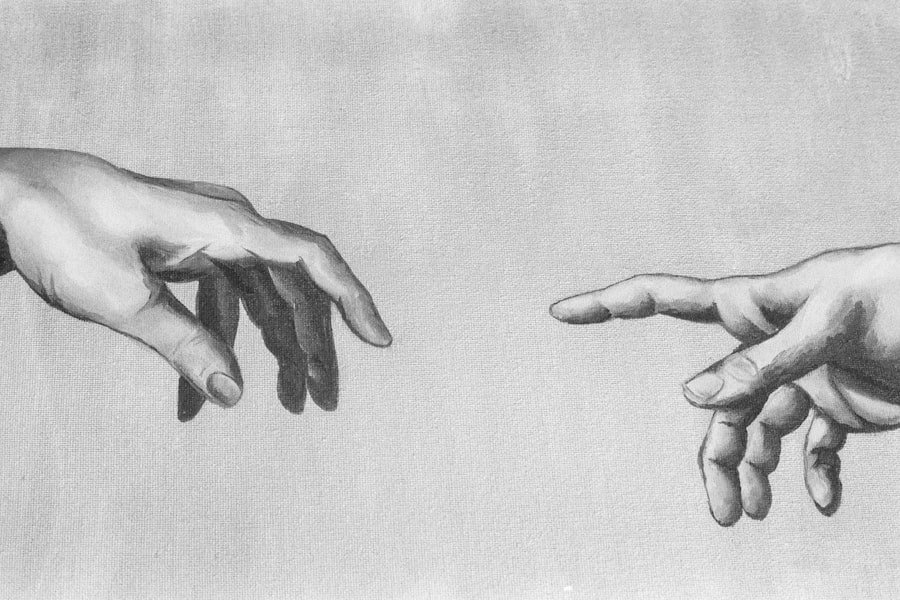Facial massage is an ancient practice that has been embraced across various cultures for centuries, celebrated not only for its relaxing qualities but also for its myriad benefits to skin health. Originating from traditional practices in places like China and Japan, facial massage has evolved into a popular wellness trend in modern skincare routines. The technique involves the application of gentle pressure and rhythmic movements on the face, which can stimulate circulation, promote lymphatic drainage, and enhance the overall appearance of the skin.
As more individuals seek holistic approaches to skincare, facial massage has gained recognition as a powerful tool for rejuvenation and relaxation. The allure of facial massage lies in its dual benefits: it serves as both a therapeutic experience and a means to improve skin vitality. Many people find that incorporating facial massage into their routine not only helps alleviate stress but also contributes to a more radiant complexion.
With the rise of self-care movements and an increasing awareness of the importance of mental well-being, facial massage has become a sought-after practice for those looking to enhance their skincare regimen while indulging in a moment of tranquility.
Key Takeaways
- Facial massage can improve skin health and promote relaxation
- Preparing the skin with gentle cleansing and moisturizing is essential for a successful facial massage
- Basic techniques like effleurage and petrissage can be used for facial massage
- Advanced techniques like lymphatic drainage and acupressure can target specific skin concerns
- Incorporating essential oils and using tools like gua sha can enhance the benefits of facial massage
Benefits of Facial Massage for Skin Health
Improved Blood Circulation
One of the primary advantages is increased blood circulation. When the skin is massaged, blood flow is stimulated, delivering essential nutrients and oxygen to skin cells. This enhanced circulation can lead to a more vibrant complexion, as well as improved cell turnover, which is crucial for maintaining youthful skin. Additionally, increased blood flow can help reduce the appearance of fine lines and wrinkles, making facial massage an effective anti-aging strategy.
Lymphatic Drainage and Detoxification
The lymphatic system plays a vital role in removing toxins and waste products from the body. Facial massage techniques can encourage lymphatic drainage, helping to reduce puffiness and swelling, particularly around the eyes and cheeks. This detoxifying effect not only contributes to a clearer complexion but also promotes overall skin health by allowing the skin to breathe and regenerate more effectively.
Improved Skin Elasticity
Furthermore, regular facial massage can help improve skin elasticity, leading to firmer and more resilient skin over time.
Preparing the Skin for Massage

Before embarking on a facial massage journey, it is essential to prepare the skin adequately to maximize the benefits of the treatment. The first step in this preparation process is cleansing. A thorough cleanse removes dirt, makeup, and impurities that may hinder the effectiveness of the massage.
Using a gentle cleanser suited to your skin type ensures that the skin is clean without stripping it of its natural oils. Following cleansing, it is advisable to exfoliate the skin to eliminate dead skin cells that can obstruct absorption and diminish the overall effectiveness of subsequent treatments. After cleansing and exfoliating, hydrating the skin is crucial.
Applying a nourishing serum or moisturizer creates a smooth canvas for the massage, allowing fingers or tools to glide effortlessly over the skin. Ingredients such as hyaluronic acid or glycerin can provide an extra boost of hydration, ensuring that the skin remains plump and supple throughout the massage process. Additionally, warming up the product in your hands before application can enhance absorption and create a more enjoyable experience.
Basic Facial Massage Techniques
Basic facial massage techniques are accessible to anyone and can be easily incorporated into daily skincare routines. One fundamental technique involves using gentle upward strokes with the fingertips, starting from the center of the face and moving outward toward the hairline. This method not only promotes circulation but also helps lift and firm the skin over time.
It is essential to use light pressure, especially around delicate areas such as the eyes, where the skin is thinner and more sensitive. Another effective basic technique is tapping or patting. This involves using your fingertips to gently tap along various areas of the face, including the forehead, cheeks, and chin.
Tapping stimulates blood flow and energizes the skin while also promoting lymphatic drainage. This technique can be particularly beneficial in reducing puffiness around the eyes and enhancing overall radiance. Incorporating these basic techniques into your skincare routine can yield noticeable improvements in skin texture and tone.
Advanced Facial Massage Techniques
For those looking to elevate their facial massage experience, advanced techniques offer deeper relaxation and enhanced results. One such technique is Gua Sha, which involves using a smooth-edged tool made from jade or rose quartz to scrape along the skin’s surface. This method not only promotes circulation but also helps release tension in facial muscles, leading to a more sculpted appearance.
Gua Sha can be particularly effective for contouring the jawline and cheekbones while also providing a cooling sensation that soothes inflammation. Another advanced technique is lymphatic drainage massage, which focuses on stimulating lymph nodes to promote detoxification. This method requires specific movements that follow the natural pathways of lymphatic flow, often involving gentle pressure applied in specific directions.
By encouraging lymphatic drainage, this technique can significantly reduce puffiness and improve overall skin tone. Practicing these advanced techniques requires some knowledge and skill; however, they can yield remarkable results when performed correctly.
Targeting Problem Areas with Facial Massage

Targeting Puffiness
Many people struggle with puffiness around the eyes due to factors such as lack of sleep or allergies. To target this area effectively, gentle tapping motions using your ring finger can help stimulate circulation without applying excessive pressure. Additionally, incorporating cooling tools like jade rollers can further reduce swelling and provide a soothing effect.
Relieving Jaw Tension
Another common concern is tension in the jaw area, often exacerbated by stress or teeth grinding. To alleviate this tension, techniques such as kneading or circular motions along the jawline can be beneficial. Using your thumbs or fingers to apply pressure along the masseter muscle (the muscle responsible for chewing) can help release tightness and promote relaxation.
Enhancing Skincare Routine
By focusing on these problem areas during facial massage sessions, individuals can achieve targeted relief while enhancing their overall skincare routine.
Using Tools for Facial Massage
In recent years, various tools have emerged in the beauty industry designed specifically for facial massage, each offering unique benefits that enhance the experience. One popular tool is the jade roller, which consists of a handle with two jade stones—one larger for broader areas of the face and one smaller for delicate areas like under the eyes. The coolness of jade helps reduce inflammation while promoting circulation when rolled over the skin’s surface.
Another tool gaining popularity is the facial cupping set, which utilizes suction cups to create negative pressure on the skin. This technique encourages blood flow and lymphatic drainage while also promoting collagen production. Cupping can be particularly effective for lifting sagging skin and improving overall texture.
When using these tools, it’s essential to follow proper techniques and ensure that they are cleaned regularly to maintain hygiene.
Incorporating Essential Oils into Facial Massage
Essential oils have long been revered for their therapeutic properties, making them an excellent addition to facial massage routines. When diluted with a carrier oil such as jojoba or sweet almond oil, essential oils can enhance both relaxation and skin health during massage sessions. For instance, lavender oil is known for its calming effects and can help reduce stress while promoting a sense of tranquility during self-care rituals.
Tea tree oil is another popular choice due to its antibacterial properties, making it ideal for those with acne-prone skin. Incorporating a few drops into your massage oil can help combat breakouts while providing a soothing experience. It’s crucial to perform a patch test before using any essential oil on your face to ensure there are no adverse reactions.
By thoughtfully selecting essential oils based on individual needs, one can elevate their facial massage experience significantly.
Tips for Self-Facial Massage at Home
Self-facial massage at home can be both enjoyable and beneficial when approached with intention and care. One key tip is to establish a routine that allows you to dedicate time solely for this practice—ideally in a quiet space where you feel relaxed and comfortable. Setting aside 10-15 minutes several times a week can yield significant improvements in both your skin’s appearance and your overall well-being.
Additionally, using visual aids such as instructional videos or diagrams can help guide you through various techniques if you’re new to facial massage. Starting with basic movements before progressing to more advanced techniques allows you to build confidence in your skills gradually. Remember that consistency is vital; regular practice will lead to better results over time as your skin becomes accustomed to receiving this nurturing attention.
Professional Facial Massage Services
While self-facial massage offers numerous benefits, seeking professional services can provide an elevated experience that enhances results even further. Licensed estheticians or massage therapists trained in facial techniques possess specialized knowledge about anatomy and skincare products that can optimize your treatment. Professional sessions often incorporate advanced techniques such as lymphatic drainage or Gua Sha alongside high-quality products tailored specifically for your skin type.
Moreover, professional treatments often include additional elements such as steam therapy or masks that complement facial massage by deeply hydrating or detoxifying the skin.
Conclusion and Final Tips for Maintaining Healthy Skin
Maintaining healthy skin requires a multifaceted approach that includes proper cleansing, hydration, sun protection, and regular treatments like facial massage. By integrating these practices into your daily routine—whether through self-massage techniques at home or professional services—you can cultivate a skincare regimen that promotes both physical health and emotional well-being. In addition to regular facial massages, staying hydrated by drinking plenty of water throughout the day supports overall skin health from within.
Pairing this with a balanced diet rich in antioxidants—found in fruits and vegetables—can further enhance your complexion’s vitality. Ultimately, embracing a holistic approach that prioritizes self-care will lead not only to healthier skin but also to a greater sense of balance and tranquility in your life.
FAQs
What are the benefits of facial massage for the skin?
Facial massage can help improve circulation, promote lymphatic drainage, reduce puffiness, and increase the production of collagen and elastin, leading to firmer, healthier-looking skin.
What are some common facial massage techniques?
Common facial massage techniques include effleurage (light, gliding strokes), petrissage (kneading and lifting movements), tapotement (light tapping or slapping), and acupressure (applying pressure to specific points on the face).
How often should facial massage be done for optimal results?
For optimal results, facial massage can be done 2-3 times a week. It is important to be gentle and not overdo it, as excessive massage can potentially damage the delicate facial skin.
Can facial massage help with wrinkles and fine lines?
Yes, regular facial massage can help reduce the appearance of wrinkles and fine lines by promoting collagen production and improving skin elasticity.
Are there any contraindications for facial massage?
People with certain skin conditions such as acne, rosacea, or eczema should consult with a dermatologist before trying facial massage. Additionally, individuals with open wounds, cuts, or infections on the face should avoid facial massage until the skin has healed.









